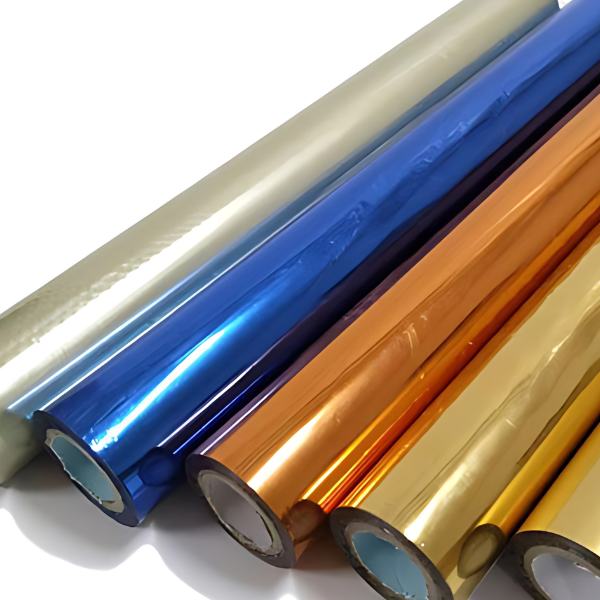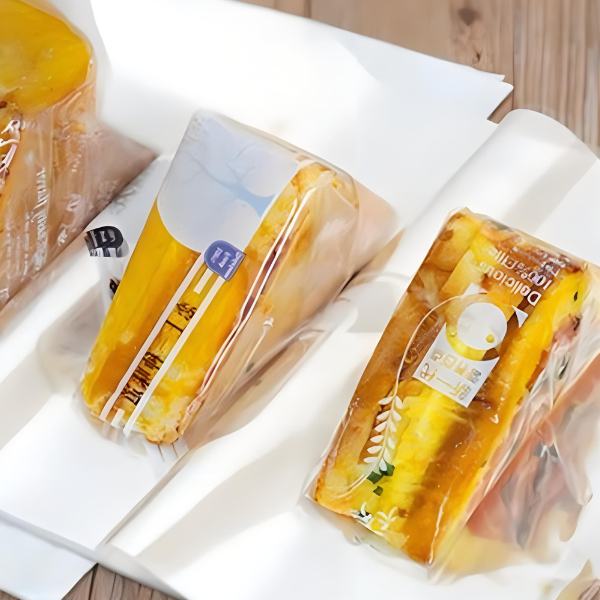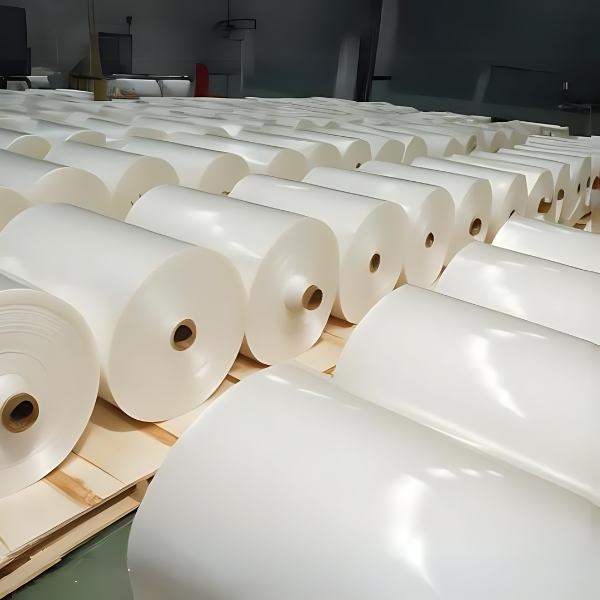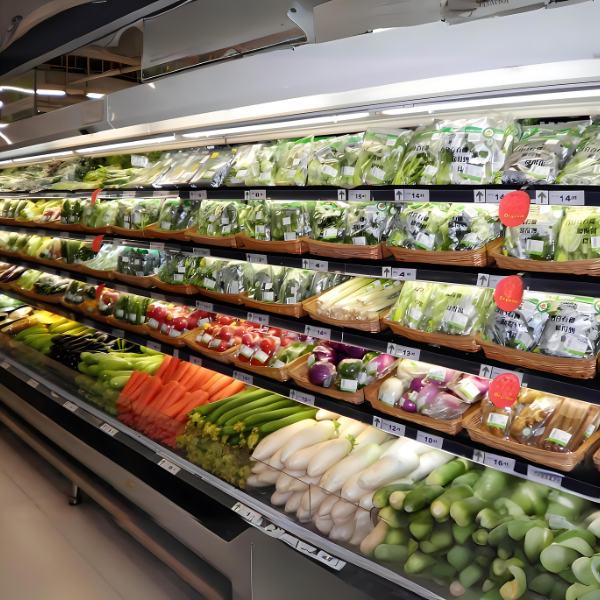Since the early 20th century, the versatile polyethylene (PE) films, synthesized from ethylene monomers, have marked significant breakthroughs in materials science.
As a globally utilized plastic, PE films are crucial in numerous industries due to their lightweight, high strength, good transparency, and chemical resistance.
This article explores the developmental history of polyethylene films, their different types, and their applications in contemporary society.
The Developmental History of Polyethylene
The developmental history of polyethylene (PE) began in the early 20th century and can be divided into the following key stages:
Discovery and Early Development (1933-1939)
In 1933, Eric Fawcett and Reginald Gibson at Imperial Chemical Industries (ICI) accidentally discovered polyethylene. They synthesized a white, waxy substance, polyethylene, by polymerizing ethylene gas under high pressure. In 1939, ICI commenced commercial-scale production of polyethylene.
World War II Applications (1939-1945)
During World War II, polyethylene was used as an insulating material for radar cables. Due to its excellent electrical insulation and lightweight properties, polyethylene played a significant role in Allied radar technology.
Post-War Commercialization and Diversification (After 1945)
Post-war, polyethylene began to be widely commercialized. Scientists have developed polyethylene in different densities, such as low-density polyethylene (LDPE) and high-density polyethylene (HDPE).
In the 1950s, more varieties of polyethylene, like Linear Low-Density Polyethylene (LLDPE), were produced through various manufacturing processes and catalysts.
Technological Innovation and New Applications (Late 20th Century to 21st Century)
Towards the end of the 20th century, technological innovations further expanded the application areas of polyethylene. The development of new materials like Ultra High Molecular Weight Polyethylene (UHMWPE) extended its use into more advanced fields, such as medical devices and bulletproof equipment.
Entering the 21st Century, environmental protection and sustainability have become significant directions in the development of polyethylene. Polyethylene recycling and the development of eco-friendly products like bio-based polyethylene have increasingly become focal points of research.
What is Polyethylene Film?
Polyethylene film (PE film) is a versatile plastic film made by polymerizing ethylene monomers. Ethylene, the primary raw material for PE film, is a light hydrocarbon compound widely found in natural gas and petroleum. Polyethylene films are produced by selecting film-grade polyethylene particles and processing them through blowing or casting methods into a fixed film form with a thickness of 0.002-0.3mm.
PE films are extensively used in multiple industries due to their lightweight, high strength, good transparency, and excellent chemical resistance. Their favorable physical and chemical stability and water-resistant and UV-protective properties make them widely used in fields like agricultural covering, packaging materials, and building protection.
Additionally, PE films are also easy to process and recyclable, making them environmentally friendly.
PE films occupy a significant proportion of global plastic production, becoming an important practical material in modern society.
According to the latest report by QYResearch, “Global Polyethylene Film Market Report 2023-2029,” the global market for polyethylene films is expected to reach $40.46 billion by 2029, with a compound annual growth rate (CAGR) of 3.8% over the next few years.
(Global Market Size)
What are the different types of polyethylene?
Polyethylene, one of the most widely used plastics globally, comes in various types, each with unique properties and applications.
The three most common types of polyethylene are low-density polyethylene (LDPE), high-density polyethylene (HDPE), and linear low-density polyethylene (LLDPE), each of which is vital in daily life.
Low-density polyethylene (LDPE): Soft and highly transparent, it possesses good chemical resistance and electrical insulation and is primarily used in producing plastic bags, films, containers, and tubing.
High-Density Polyethylene (HDPE): Harder and stronger than LDPE with better heat resistance, used in producing bottles, pipes, plastic lumber, and storage tanks.
Linear Low-Density Polyethylene (LLDPE) : With properties between LDPE and HDPE, it has excellent tear resistance and impact strength, mainly used in films and plastic bags.
The polyethylene family also includes ultra-high-molecular-weight Polyethylene (UHMWPE), known as “the steel of plastics” for its outstanding wear resistance and strong impact strength, with molecular weights reaching millions. UHMWPE is widely used in wear-resistant parts, medical devices, and bulletproof gear and is even crucial in the aerospace and military sectors. It is a vital component of modern industry and a key material driving technological advancement and engineering development.
The following table compares four different types of polyethylene in multiple dimensions. Each type of polyethylene has unique properties and uses suitable for various applications.
| Property/Type | Low-Density Polyethylene (LDPE) | High-Density Polyethylene (HDPE) | Linear Low-Density Polyethylene (LLDPE) | Ultra-High Molecular Weight Polyethylene (UHMWPE) |
|---|---|---|---|---|
| Density | 0.910-0.925 g/cm³ | 0.941-0.965 g/cm³ | 0.915-0.925 g/cm³ | > 0.930 g/cm³ |
| Strength | Lower | Higher | Moderate | Extremely High |
| Hardness | Softer | Harder | Softer | Extremely Hard |
| Heat Resistance | Lower (up to 80℃) | Higher (up to 120℃) | Moderate (up to 80℃) | High (up to 130℃) |
| Chemical Resistance | Good | Very Good | Good | Very Good |
| Transparency | High | Low to Moderate | High | Low |
| Processability | Easy to Process | Easy to Process | Easy to Process | Difficult to Process |
| Applications | Packaging Films, Plastic Bags | Bottles, Pipes, Tanks | Films, Plastic Bags | Wear Parts, Medical Equipment, Bulletproof Gear |
| Environmental Impact | Recyclable | Recyclable | Recyclable | Difficult to Recycle |
| Cost | Lower | Moderate | Moderate | Higher |
Advances in technology and increased environmental awareness will drive the future development of PE films towards sustainability and eco-friendliness. PE films hold a significant position in global plastic production, being a core component of modern industry and simultaneously promoting technological innovation and engineering development.
PE films are extensively used in areas like wear-resistant parts, medical devices, packaging materials, and agriculture. They demonstrate their unique value and indicate their continued significant role in the global market in the coming years.


















